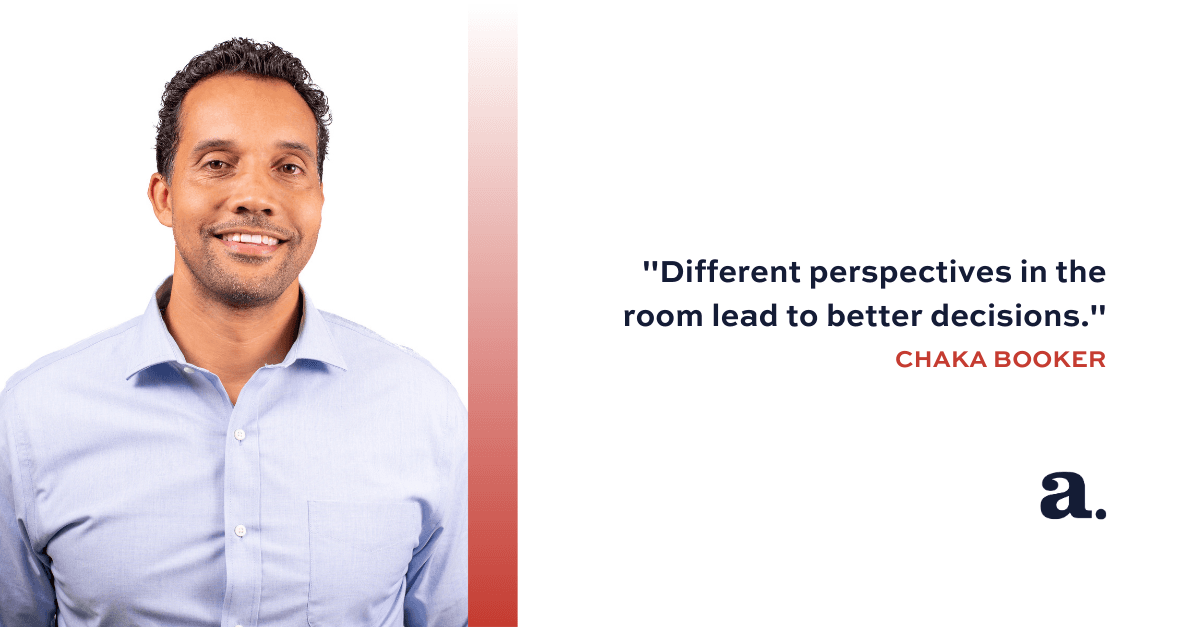
Way We Work Webinar Recap: Chaka Booker on Diversity, Equity and Inclusion
By Brendon Schrader, Founder & CEO
In our recent Way We Work webinar, we partnered with the Carlson School of Management to explore how practicing diversity, equity and inclusion can jumpstart organizations’ efforts to recruit and retain talent. Chaka Booker of The Broad Center joined host Brendon Schrader, Founder & CEO of Antenna, to share practical strategies for building teams that reflect the diversity of our world. These insights are a resource for leaders committed to acting with urgency to create more diverse and equitable organizations as the fight for racial justice continues.
Strive for structure, not perfection
Interviewers will never have a perfect track record, but they can take steps to increase the odds of choosing the right candidate. Adding structure -before, during and after interviews- is key to removing bias from the process, leading to better hiring decisions. “When you make more accurate decisions, you end up identifying talent that other people have very likely overlooked, and that’s where diversity, equity, inclusion ties into this,” Booker said.
Assessing fit: How bias seeps in
Interviewers are most vulnerable to bias as they decide whether a candidate has the right traits for the job, Booker said. A candidate’s skills and traits are distinct. How so? Skills are what a person can do, while traits are how they do it (as Booker shared, budgeting would be a skill, and optimism would be a trait). He cautioned that traits are wrapped up in a person’s identity, opening the door to bias if interviewers aren’t careful. Similarly, without a strategy to reduce bias, questions of “culture fit” can be barriers to diversity.
Booker shared several ways to limit bias in evaluating if a candidate has the right traits for a job and would fit an organization’s culture:
Pre-interview. Separate job responsibilities into skills and traits. Discuss the list of traits with colleagues to test its accuracy.
Interview. Use the list to note if a candidate shows a trait, or the opposite of one, during each interview. This documents evidence across interviews, replacing subjectivity with structure and leading to more concrete decision-making.
Post-interview. Curb bias by rethinking questions of “culture fit.” If interviewers doubt a candidate is a fit, consider whether the person could adapt or add to organizational culture. “Reframe it: Instead of being a deficit, is it an asset, this thing that’s different about this person?” Booker said.
Fight bias with deliberate purpose
Booker finds intuition valuable, but he cautioned that it can also be unreliable and subject to cognitive and social biases such as racial prejudice. Mindfulness and reflection can help minimize bias in interviewing. “The process of reflecting is what hones your intuition,” Booker said.
He explained steps interviewers can take to check their biases and first impressions so they don’t control decision-making:
Pre-interview. Interviewers should create a bias list by reflecting on what they notice when they first meet someone. Sharing the list with a co-interviewer is a powerful accountability mechanism.
Interview. Note a first impression of how well a candidate will interview, deliberately set it aside and focus on the conversation. This conscious act will reduce the impact of the first impression and the bias that comes with it.
Communicating for inclusion leads to retention
Booker shared a pair of insights about reducing turnover: Inclusion leads to retention, and clarity of expectations is a basic employee need that’s critical to job performance. However, employees can feel excluded because of miscommunication in these areas. He offered solutions to two common communication hurdles:
Generational gaps. Millennial and Gen Z expectations around diversity, equity and inclusion are generally more progressive, Booker said. He added that newer generations feel they should be included in decisions much more quickly.
Generational gaps can cause communication issues when new hires bring fresh perspectives to an organization and meet resistance from longer-term employees. The tenured workers may feel criticized or like the ideas have been tried in the past. The new hires are left believing the organization isn’t interested in change.
As a result, Booker suggests that new hires lead with curiosity. This allows them to think critically without sounding critical. Similarly, longtime employees who hear an idea that’s been tried before should consider what might be different now before dismissing it. These techniques can minimize communication problems that lead to feelings of exclusion at the beginning of a relationship.
The curse of knowledge. This cognitive bias happens when someone unknowingly assumes that other people share the same background and knowledge. It can prevent organizations from providing all the knowledge that people with different backgrounds and experiences need to be effective. Booker shared a few ideas for how to get people the context they need.
Send new hires on a listening tour of key people in the organization. Meeting with more senior colleagues who have a variety of backgrounds will impart knowledge that wouldn’t have been shared otherwise. “It’s about filling gaps in their knowledge because you didn’t cover everything,” he explained.
Leaders should also create and share a user manual describing their values and how they work best with others. This will help shorten the learning curve for new employees and avoid unnecessary misunderstandings that could cause them to leave the organization. “You’re going to build a much stronger relationship and a much stronger culture that allows you to tap into the broad range of diversity that exists out there,” Booker said.
Practicing diversity, equity and inclusion is both the right thing to do and a smart way to build more successful teams. Leaders can apply these practices right away to counteract bias in the interview process, bridge communication gaps among employees and equip new hires with the knowledge they need to succeed. It’s an approach that will help organizations identify talented hires who often go overlooked and retain employees long-term.
---
Download Chaka's presentation and visit WayWeWork.com for updates on future events.
---
